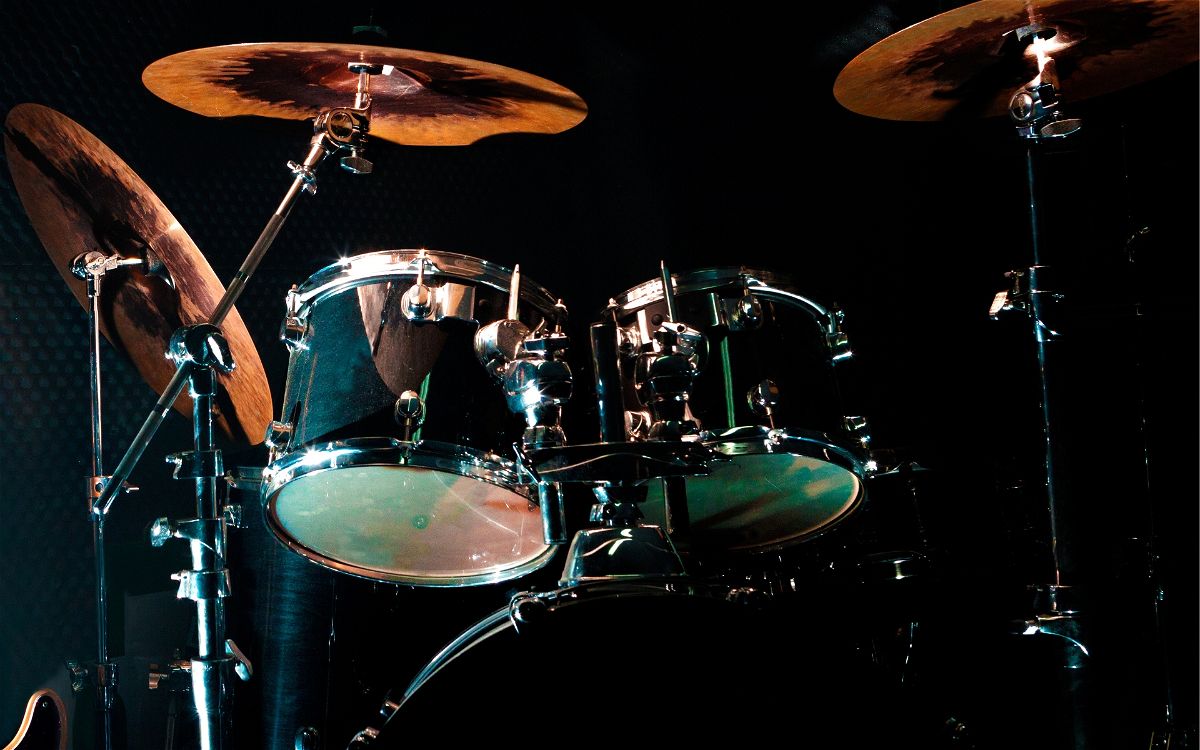The phrase tom toms is something that every musician has heard at some point or another. These are specific types of drums, and most drum sets wouldn’t be complete without them.
There are usually several tom toms in a drum kit, and they come in different sizes. The smaller ones tend to produce higher-pitched sounds, while the larger ones produce deeper, lower-pitched sounds.
In this guide, I’ll explain everything you need to know about each tom on a drum set. We’ll look at their anatomy, various types, and all the hardware features that get used to put them together. I’ll also explain what toms are used for in music.
Contents
What Exactly are Tom Toms?
Tom-tom drums, often just called “toms,” are a type of drum that you’ll commonly find in a standard drum set.
They have a more open and resonant sound compared to the sharp crack of a snare drum.
Drum sets typically feature different sized toms around the drum set and they are most often used within drum breaks and drum fills.
In a typical drum kit setup, you’ll find two types of toms:
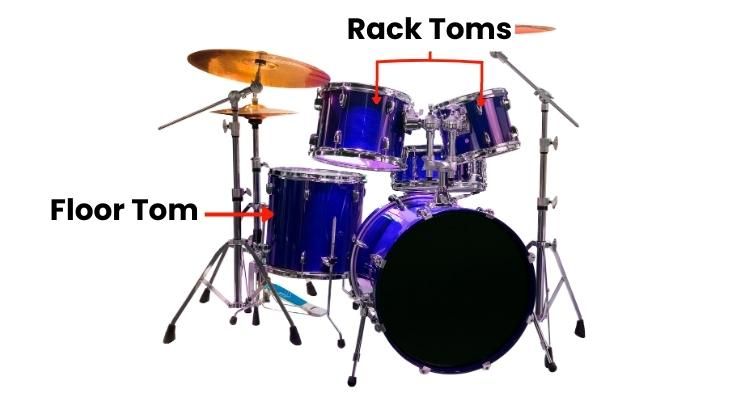
- Rack Toms: These are mounted on the drum set above the bass drum. They are typically smaller in size and produce higher pitched sounds.
- Floor Toms: These are larger and sit on the floor with legs attached to them. As they are bigger, they produce a deeper sound.
Drummers use toms to add variety and depth to the rhythm they’re playing. They’re often used for drum fills, which are short rhythmic patterns drummers play to transition between different parts of a song.
So, when you’re listening to a song and you hear the drummer play a quick series of notes that move from high to low (or vice versa), they’re probably playing a fill on the toms!
Tom Tom Naming Conventions
Before we get right into the different types of toms, it’s worth noting that most people don’t refer to them as tom toms anymore. That naming convention was used in the 20th century and early 2000s, but drummers and musicians have started referring to them as just ‘toms’.
You’ll very rarely hear anyone refer to them as tom toms unless they’re from the older generation. That doesn’t mean it’s wrong to call them that. The name has just evolved a bit.
Different Types of Tom Tom Drums
High Toms

The high tom is always the smallest tom that you’ll find in a drum kit setup.
It’s typically positioned just above the snare drum, but some drummers like to place high toms diagonally to the snare drum.
The most common size for high toms is 10”, but you’ll see 8” ones in drum sets that have several toms in the setup. Regarding depth, they’re typically between 6” and 8” deep.
Since high toms are small, they produce the highest-pitched sounds out of all the standard toms on a kit.
Middle Toms
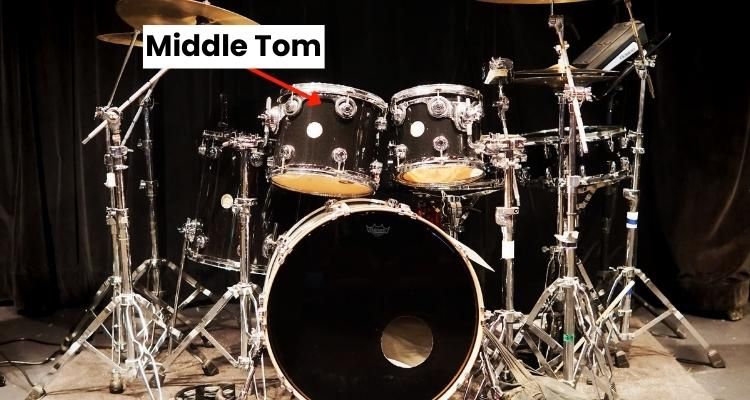
Middle toms have their name due to them being placed in between the high tom and floor tom.
A middle tom is slightly larger than a high tom, causing it to produce a deeper tone. Most middle toms are 12”, but the size may differ in different drum kit configurations.
This is one of the least used types of toms, as many drummers prefer to play with only one rack tom. They’ll place a ride cymbal in the position that a middle tom would normally go. You’ll generally see this kind of setup from gigging drummers that don’t want to take full kits to shows.
Floor Toms
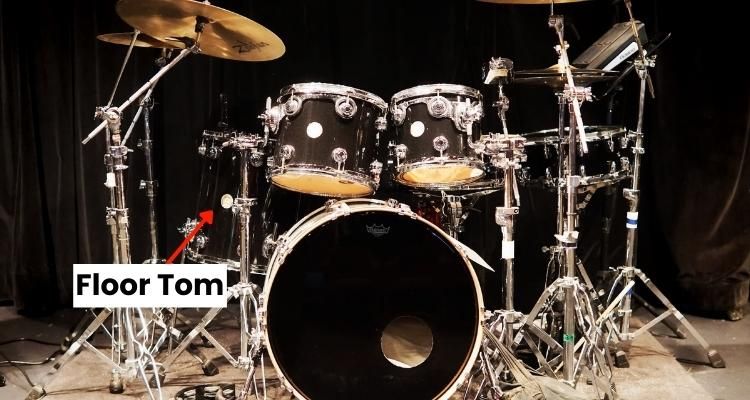
A floor tom is the largest of all the toms, and it gets placed on the floor.
It’s positioned right next to the snare drum, but there’ll be a bit of a gap so that your leg can reach the kick drum pedal.
Most floor toms are 16”, with depths between 10” and 16”. Some floor toms are 14”, but you’ll rarely see ones smaller than that on regular drum kits. You’ll only find smaller floor toms on compact sets.
Floor toms produce the lowest tones out of all the toms. They also tend to have the most resonance if they’re not dampened.
Roto Toms
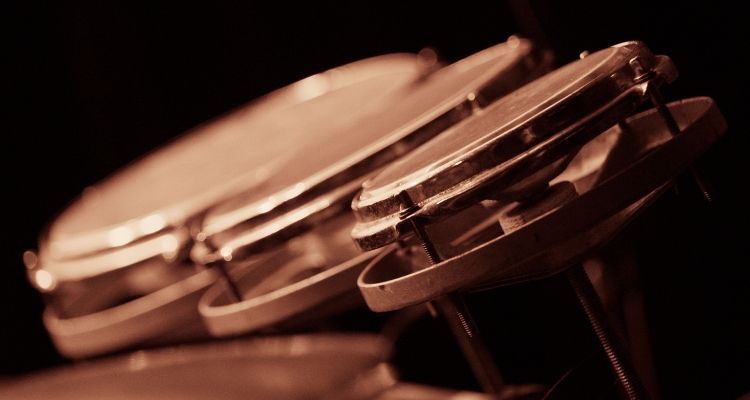
Roto toms are unique kinds of toms that you’ll only find on a few drummers’ kits.
They’re an interesting type of drum that can be rotated to change the pitch. They don’t have deep shells, so they always have tight and aggressive tones with little resonance.
These are often used by drummers that play rock and metal, and they were especially popular with drummers playing in the classic rock era.
Concert Toms
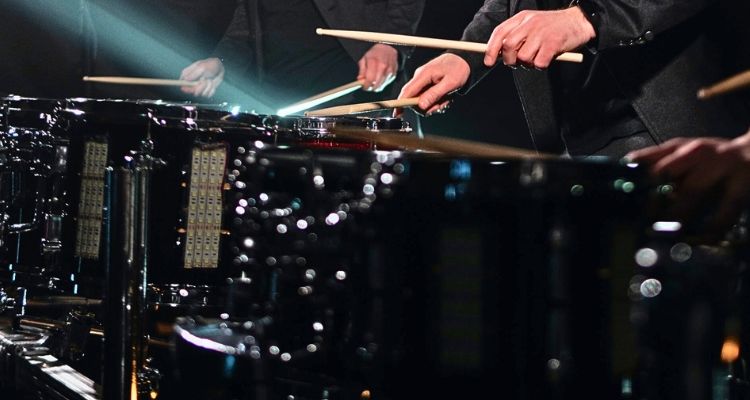
Concert toms are sets of toms mounted to hardware stands. They’re most commonly used in orchestras, as they’re designed to produce a wide range of specific tones.
You can identify concert toms by seeing a group of them placed together with no resonant drumheads on the bottom sides.
You’ll sometimes find drum kit players having these in their setups, but they’re mostly played on their own while the player is standing.
Tom Tom Drum Anatomy
Placements
As I said earlier, any drum in your setup that isn’t a snare drum can be considered a tom of some sort.
The traditional way of placing toms would be to put the high tom above the snare, the middle tom to the right, and then the floor tom to the right of the snare drum.
However, different drummers have various preferences, and the toms can be placed in any way that you prefer.
Some drummers like to put another floor tom to the left of the hi-hat, while others will even put small rack toms in the same place as a regular floor tom.
Other drummers prefer to have their mounted toms to the far left of their bass drum.
Shells
Every tom has a shell that defines its size and tone. The size will affect how high or low-pitched it is, while the material will affect the timbre you hear.
The most common shell materials for toms are poplar, maple, birch, mahogany, and oak.
Each one of these woods has various qualities, and you’ll hear those qualities come out more in toms than you will in snare drums and bass drums.
The tom shells also have things called bearing edges, which are the points at which the wood touches the drumheads. The angle of the bearing edges also affects how they sound.
Rims
The rims are the circular metal parts that attach to the top and bottom of toms. These are also known as counter hoops.
You get two main types of counter hoops which are called triple-flanged and die-cast hoops.
Triple-flanged are the most common type, while die-cast hoops are thicker and usually reserved for high-end drums from a few select brands.
The rims of rack toms often have unique designs so that they connect to mounting mechanisms, while the rims of floor toms are always standard.
Mounting Mechanisms

Every brand has a unique way of mounting the rack toms to the kick drum or cymbal stands. These designs are created so that the rack toms resonate as much as possible while still having metal arms attached to the shells.
With floor toms, they’re typically positioned on the ground and raised up by three legs. You’ll only find a few drum kits with floor toms that need to be mounted to a cymbal stand, but that’s not very common these days.
Drumheads
The drumheads are the parts of the toms that allow you to play them.
On the top sides, you get the batter heads. These are normally thicker, and they define what tones you get from each tom.
On the bottom side, you get resonant heads. They’re slightly thinner, and they determine how much the toms ring after you strike them.
Lugs and Tension Rods
Lugs and tension rods are what keep the drumheads on all the toms. The lugs are the metal tubes that you see on the side of a drum shell, while the tension rods are the long screws that run up to the counterhoops.
When you tighten the tension rods, the drumheads tighten and cause the toms to produce higher-pitched tones.
Importance of Toms in Drumming

Drum Fills
The most common use for toms is to play drum fills. A drum fill is when you come to the end of a musical phrase, and you play something different on the drums to signal that you’re moving into a new phrase.
Since toms have varying pitches, it always sounds the most interesting when you play drum fills utilizing them.
You get musical variety from playing the different sized toms, which in turn offer a range of tones.
Drummers will then play an array of different subdivisions around the toms to create intricate drum fills that are both interesting and serve the song they’re playing perfectly.
When drummers play quick intricate patterns around the toms, it’s often referred to as them playing chops.
Drum Grooves
You can also use toms to play drum grooves. While drum grooves are typically played with hi-hats and other cymbals, moving your hand over to the toms can make things sound quite interesting.
It’s very common for drummers to replace the hi-hat notes with floor tom notes, causing a drum groove to sound a lot beefier.
You can also fill in on a few toms while playing a beat to add a bit of a melodic touch. It always sounds amazing when a drummer keeps a backbeat going on the snare drum while playing various strokes around the toms.
You’ll most commonly hear toms being used in grooves in styles like rock, worship, country, and pop.
What are Toms, Final Thoughts
While snare drums and bass drums form the heartbeat of a drum kit setup, toms tend to add the flavor. It’s possible to play music without them, but having those extra warm tones gives you far more depth to work with when creating drum parts.
Phil Collins’ In the Air Tonight is the best possible example of how powerful toms can be when playing a drum fill. That fill became one of the most recognizable drum parts ever, and he couldn’t have played it without having several toms in his setup.

